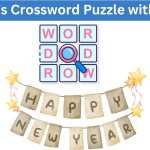Math puzzles are a fantastic way to enhance your logical thinking and problem-solving abilities. Whether you’re a student looking to practice your skills, a parent searching for fun activities for your kids, or an adult seeking a mental challenge, math puzzles offer something for everyone. From simple riddles to complex brain teasers, math puzzles can be both entertaining and educational. In this article, we’ll explore different types of math puzzles, their benefits, and how they can help you improve your cognitive skills.
Explore Different Types of Math Puzzles
Math puzzles come in many forms, each requiring different types of mathematical skills and logical thinking. Here’s a breakdown of some popular types:
1.The Missing Number Puzzle
What number should replace the question mark?
2,4,8,16,?2, 4, 8, 16, ?2,4,8,16,?
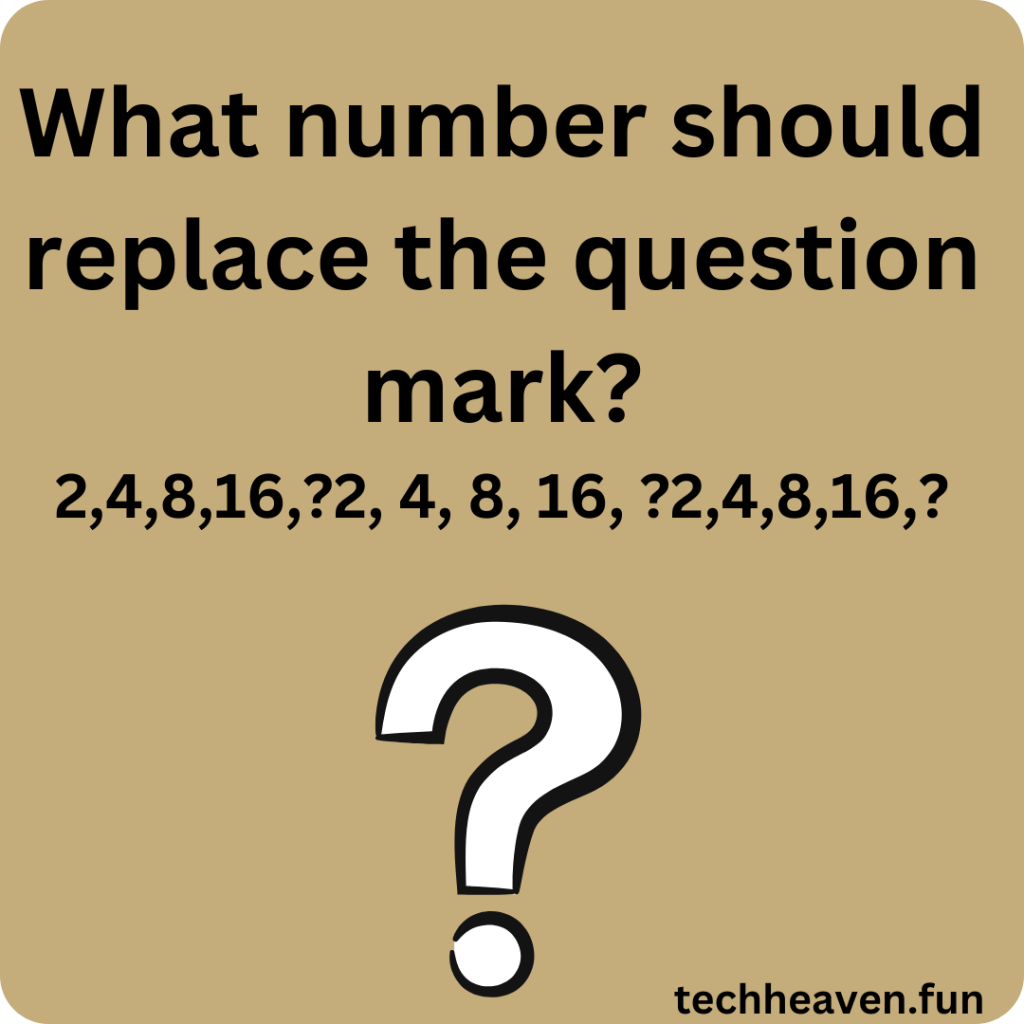
Solution: The pattern is doubling the previous number. Therefore, the next number is 323232.
2.The Coin Puzzle
You have 10 coins. One of them is fake and weighs slightly less than the others. How can you determine the fake coin using a balance scale in only two weighings?

Solution: Divide the coins into three groups: two groups of three coins each and one group of four coins.Weigh the two groups of three coins. If they balance, the fake coin is in the group of four coins.If one side is lighter, the fake coin is in that group.For the second weighing, take two coins from the lighter group and weigh them. If they balance, the third coin is the fake one. If one is lighter, that’s the fake coin.
3.The River Crossing Puzzle
A farmer needs to cross a river with a wolf, a goat, and a cabbage. He has a boat, but it can only carry him and one item at a time. If left alone, the wolf will eat the goat, and the goat will eat the cabbage. How can the farmer safely carry all three across the river?
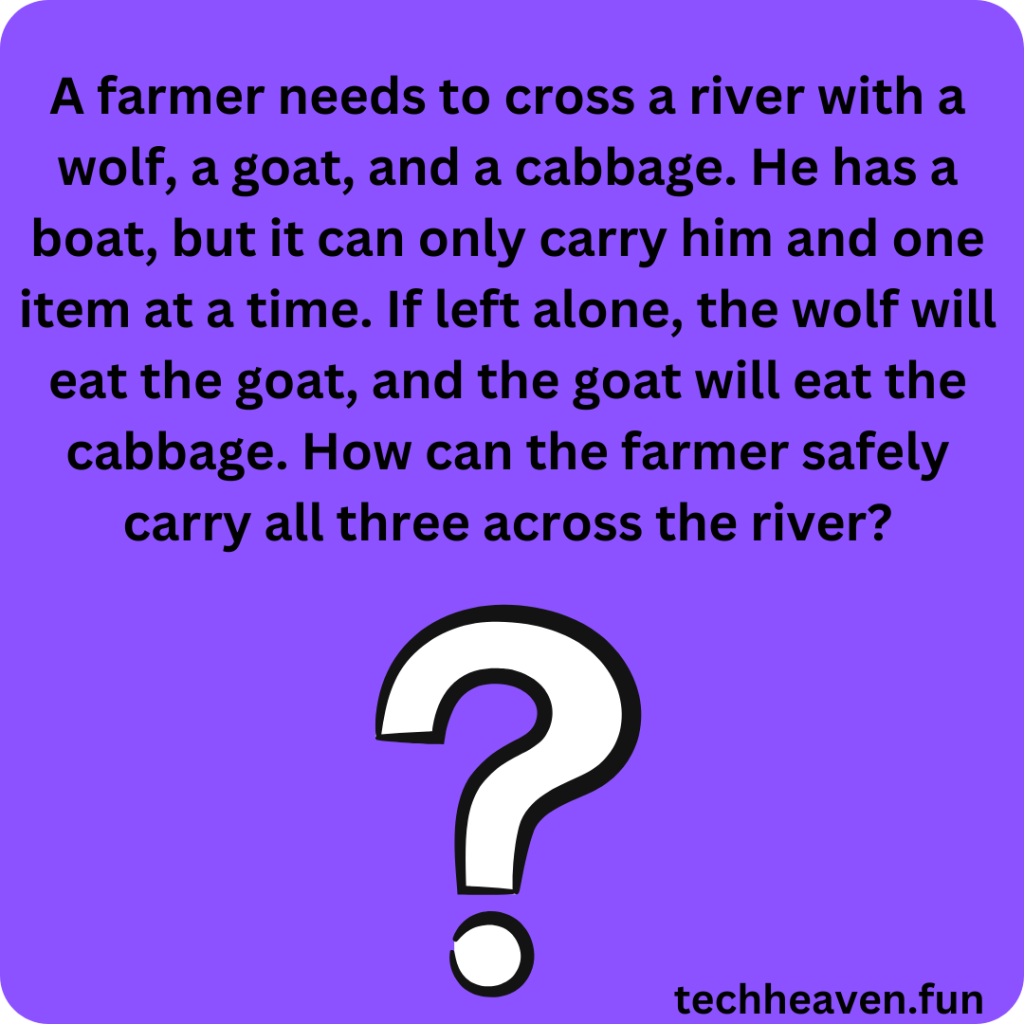
Solution: First, the farmer takes the goat across the river and leaves it on the other side. Then, he returns and takes the wolf across. He leaves the wolf on the other side and takes the goat back. He then takes the cabbage across.Finally, he returns and brings the goat across.
4.The Age Puzzle
A mother is 4 times older than her daughter. In 20 years, the mother will be twice as old as the daughter. How old are they now?

Solution:
Let the daughter’s age be xxx, and the mother’s age be 4x4x4x.
In 20 years, the daughter’s age will be x+20x + 20x+20, and the mother’s age will be 4x+204x + 204x+20.
The equation becomes:
4x+20=2(x+20)4x + 20 = 2(x + 20)4x+20=2(x+20)
Solving for xxx, we get the daughter’s age as 20, and the mother’s age is 80.
5.The Balance Puzzle
You have two identical-looking weights: one is heavier than the other, but you don’t know which. Using a balance scale, how can you determine which one is heavier with just one weighing?

Solution:
Place one weight on each side of the balance scale. The heavier one will tip the scale, revealing which one is heavier.
6.The Speed Puzzle
Two trains are 100 miles apart and start moving towards each other at the same time. One train is traveling at 50 miles per hour, and the other is traveling at 25 miles per hour. How long will it take for the two trains to meet?
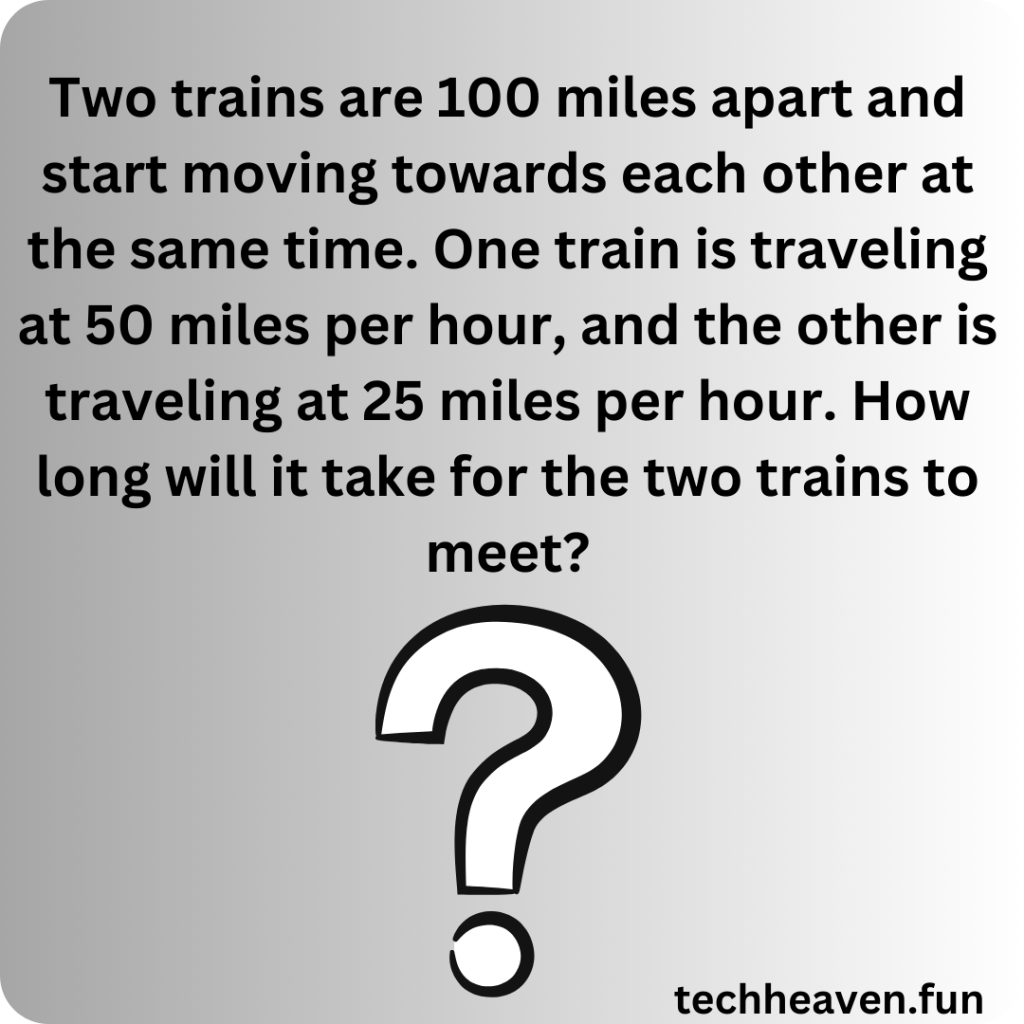
Solution:
The combined speed is 50+25=7550 + 25 = 7550+25=75 miles per hour.
To cover the 100-mile distance, it will take 10075=1.33\frac{100}{75} = 1.3375100=1.33 hours, or 1 hour and 20 minutes.
7.The Magic Square Puzzle
Fill the grid with numbers from 1 to 9 so that every row, column, and diagonal sums to 15.

Solution: The magic square looks like this:
| 2 | 9 | 4 |
| 7 | 5 | 3 |
| 6 | 1 | 8 |The sum of each row, column, and diagonal is 15.
8.The Fruit Basket Puzzle
You have a basket with 3 apples and 3 oranges. You are blindfolded and need to pick 2 pieces of fruit. What is the probability that you pick one apple and one orange?

Solution:
The total number of ways to pick 2 fruits is (62)=15\binom{6}{2} = 15(26)=15.
The number of ways to pick 1 apple and 1 orange is (31)×(31)=9\binom{3}{1} \times \binom{3}{1} = 9(13)×(13)=9.
Therefore, the probability is 915=0.6\frac{9}{15} = 0.6159=0.6.
9.The Train and Car Puzzle
A car and a train start from the same point at the same time and travel in the same direction. The car moves at 60 miles per hour, and the train moves at 80 miles per hour. How far will the train have traveled when it catches up with the car, assuming the car started 2 hours ahead?

Solution:
The car travels 60×2=12060 \times 2 = 12060×2=120 miles before the train starts.
The relative speed of the train to the car is 80−60=2080 – 60 = 2080−60=20 miles per hour.
The time it takes for the train to catch up is 12020=6\frac{120}{20} = 620120=6 hours.
In 6 hours, the train will have traveled 80×6=48080 \times 6 = 48080×6=480 miles.
10.The Palindrome Puzzle
What is the smallest number that is both a palindrome and a multiple of 11?
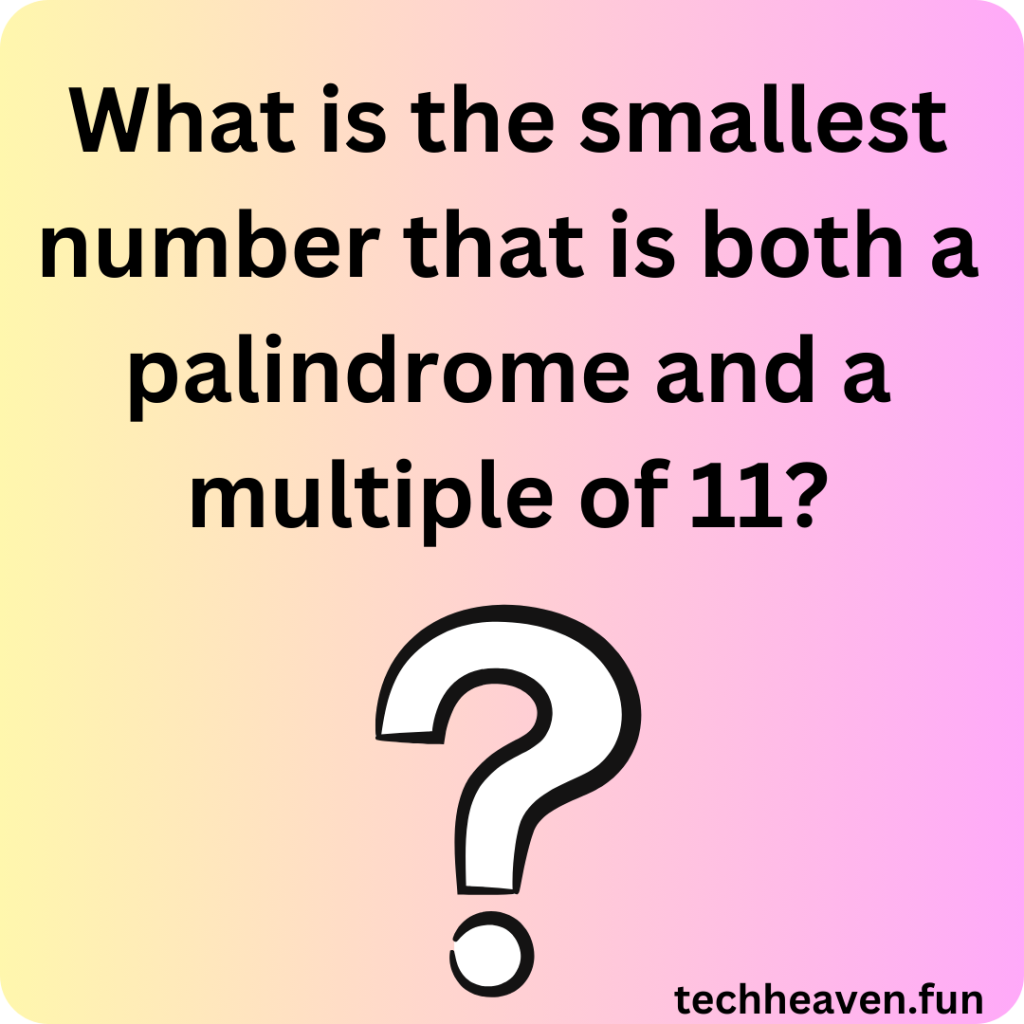
Solution:
The smallest palindrome is 11, which is also a multiple of 11.
These puzzles cover a variety of math skills, including logic, algebra, probability, geometry, and number theory, making them a great addition to your collection of engaging math challenges!
Logic Math Puzzles
Logic puzzles involve reasoning and deduction, often requiring a step-by-step approach to solving them. These puzzles are great for enhancing critical thinking and logical reasoning.
Example:
If a father is 30 years older than his son, and in 6 years, the father will be three times as old as his son, how old are they now?
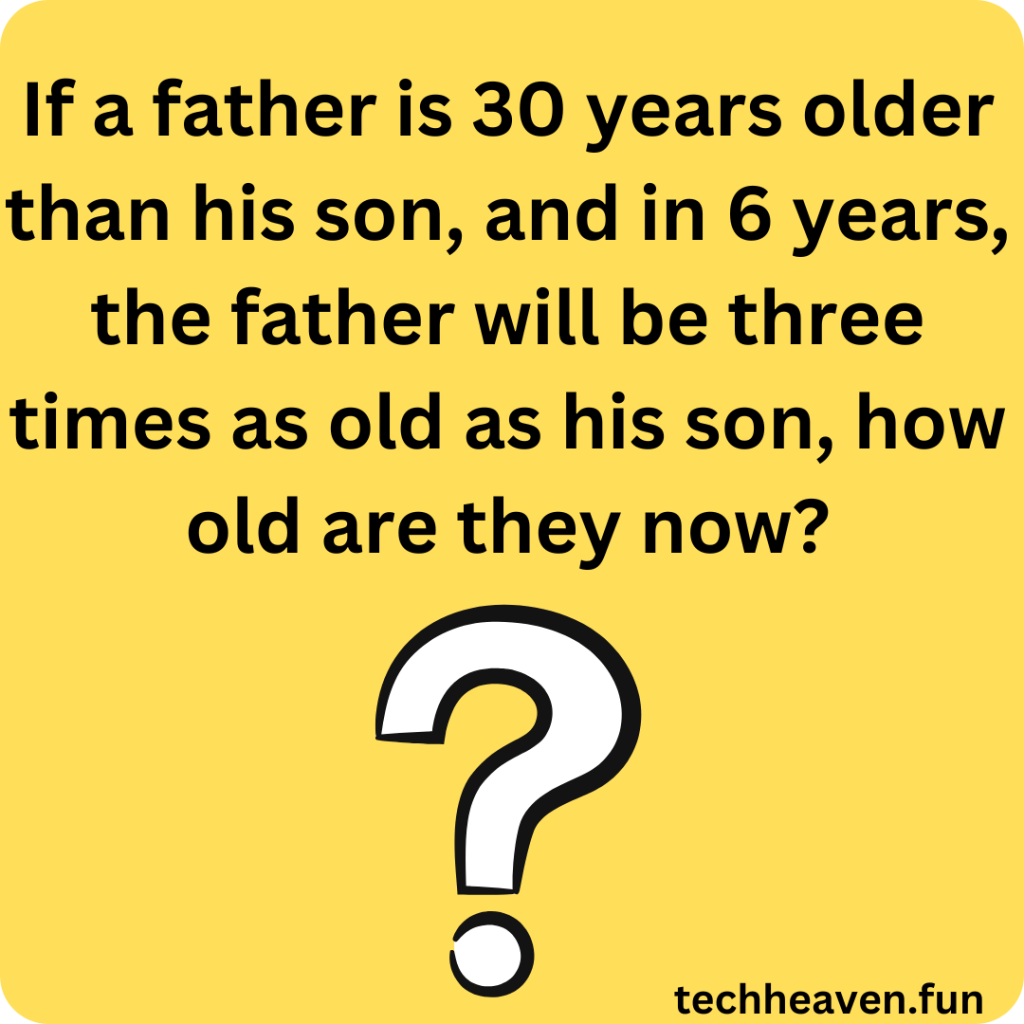
Solution: Let the son’s age be “x”. Then, the father’s age is “x + 30”. In 6 years, the father will be “x + 30 + 6” and the son will be “x + 6”. According to the puzzle, “x + 30 + 6 = 3(x + 6)”, solving for x gives us the answer: The son is 12 years old, and the father is 42 years old.
Algebra Math Puzzles
Algebra puzzles require knowledge of algebraic expressions and equations. These puzzles challenge your ability to manipulate numbers and variables to solve for unknowns.
Example:
Solve for x: 3x−7=2x+53x – 7 = 2x + 53x−7=2x+5
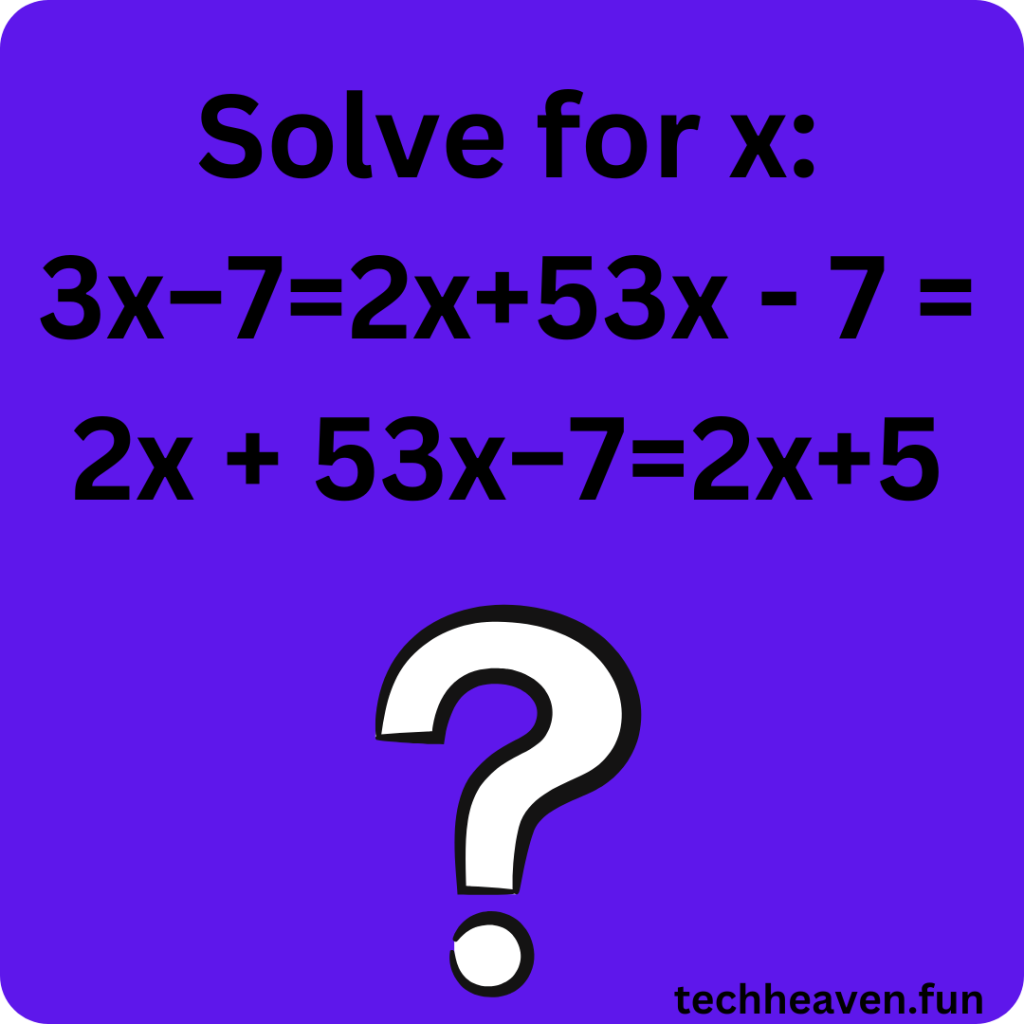
Solution:
Move the variables to one side and constants to the other:
3x−2x=5+73x – 2x = 5 + 73x−2x=5+7
x=12x = 12x=12
Geometry Math Puzzles
Geometry puzzles focus on shapes, sizes, and the properties of objects in space. These puzzles test your spatial reasoning and ability to understand geometric principles.
Example:
How many different triangles can be formed from three sticks of lengths 5, 7, and 10?

Solution: The triangle inequality theorem states that the sum of the lengths of any two sides must be greater than the third side. In this case, 5 + 7 > 10, 5 + 10 > 7, and 7 + 10 > 5. Therefore, a triangle can be formed, and there’s only one unique triangle possible with these sides.
Why Math Puzzles are Good for Your Brain
Solving math puzzles offers numerous cognitive benefits, from improving problem-solving skills to enhancing memory and concentration. Here are some key reasons why math puzzles are good for your brain:
- Boost Logical Thinking: Math puzzles require logical reasoning, which strengthens the brain’s ability to think clearly and make decisions.
- Improve Memory: Regularly solving puzzles helps improve memory retention and recall, which is crucial for learning new concepts.
- Increase Mental Agility: Math puzzles challenge your brain to think quickly and accurately, helping you become more mentally agile.
- Reduce Stress: Engaging with puzzles can also be a relaxing activity, allowing you to focus and unwind.
How to Get Better at Math Puzzles
If you’re looking to improve your math puzzle-solving skills, here are some tips:
- Practice Regularly: The more puzzles you solve, the better you’ll get at recognizing patterns and solving problems.
- Start Simple: Begin with easier puzzles and gradually increase the difficulty level to build your skills.
- Break Down Problems: Break complex problems into smaller, manageable steps to make them easier to solve.
- Learn the Concepts: Understanding the underlying mathematical concepts (such as algebra, geometry, and arithmetic) will make solving puzzles much easier.
- Challenge Yourself: Push your limits by tackling more challenging puzzles, which will help you develop a deeper understanding of math.
Check Out More Article:
- Top 10 New Year Riddles for Kids with Answers
- What am i Christmas riddles with answers
- Top 10 Best Classic Riddles for Kids
- 10 Tricky and Funny Dirty Riddles for Adults (With Answers!) to Test Your Wit
- 10 Brain-Teasing Puzzles for Adults
Try These Fun Math Puzzles
To get started, here are a few fun math puzzles to try:
- The Sum of Three Numbers
Find three numbers that add up to 12. The first number is twice the second, and the third is three times the second. - The Age Puzzle
A man is 3 times as old as his son. In 10 years, he will be twice as old as his son. How old are they now? - The Missing Dollar Puzzle
Three people check into a hotel room that costs $30. They each contribute $10, but later the hotel clerk realizes the room only costs $25. The clerk gives $5 to the bellboy to return to the guests. The bellboy decides to keep $2 and gives $1 back to each person. Now, each person has paid $9, and 3 times 9 is $27. The bellboy kept $2, so what happened to the missing dollar?
Conclusion
Math puzzles are not just for mathematicians. They offer an exciting way to enhance your problem-solving skills, boost mental agility, and improve your logical thinking. Whether you’re solving algebraic challenges, geometry puzzles, or logic brain teasers, each puzzle you tackle helps sharpen your mind. Explore the different types of math puzzles, practice regularly, and watch your skills improve over time. Happy puzzling!.

